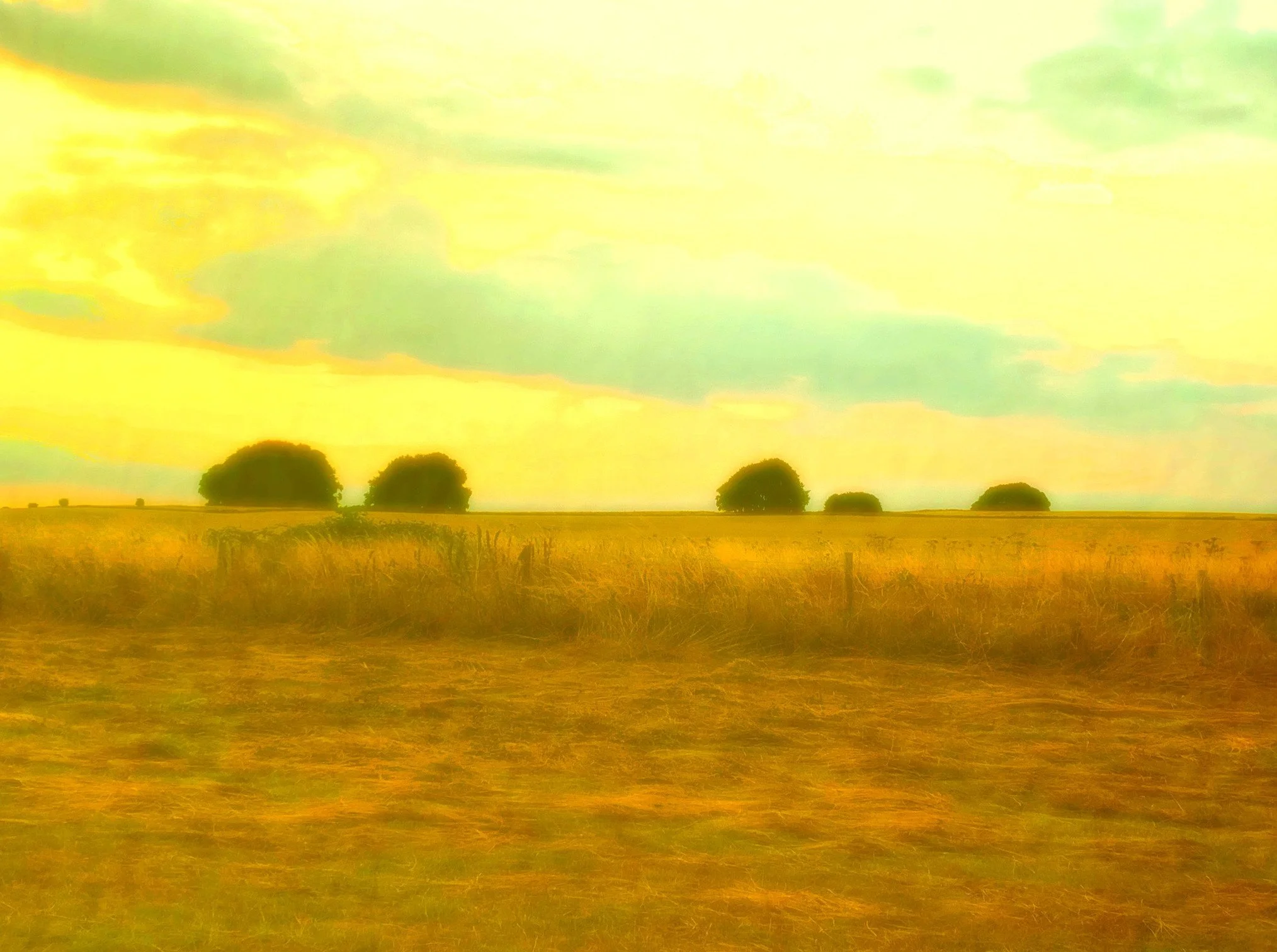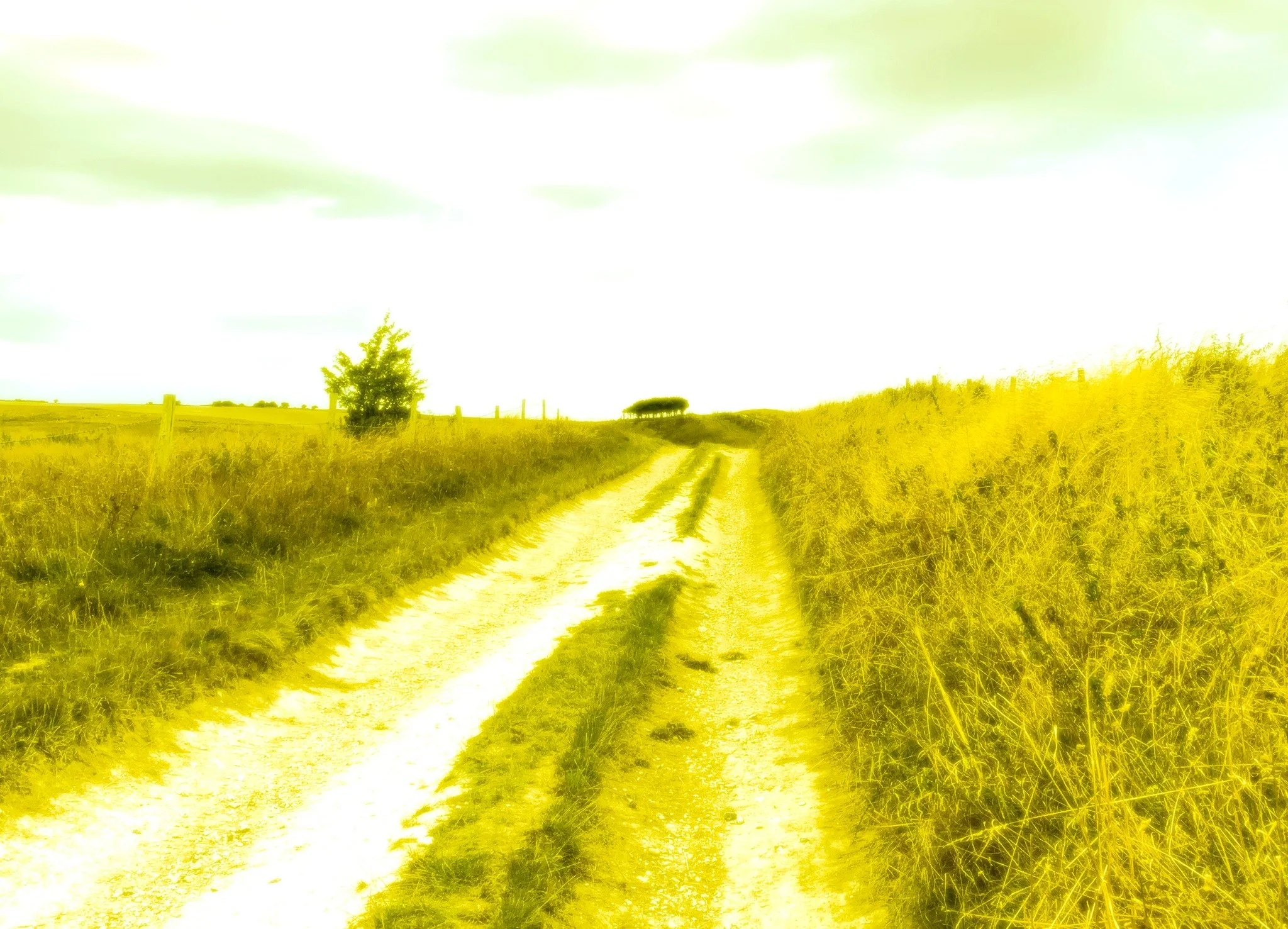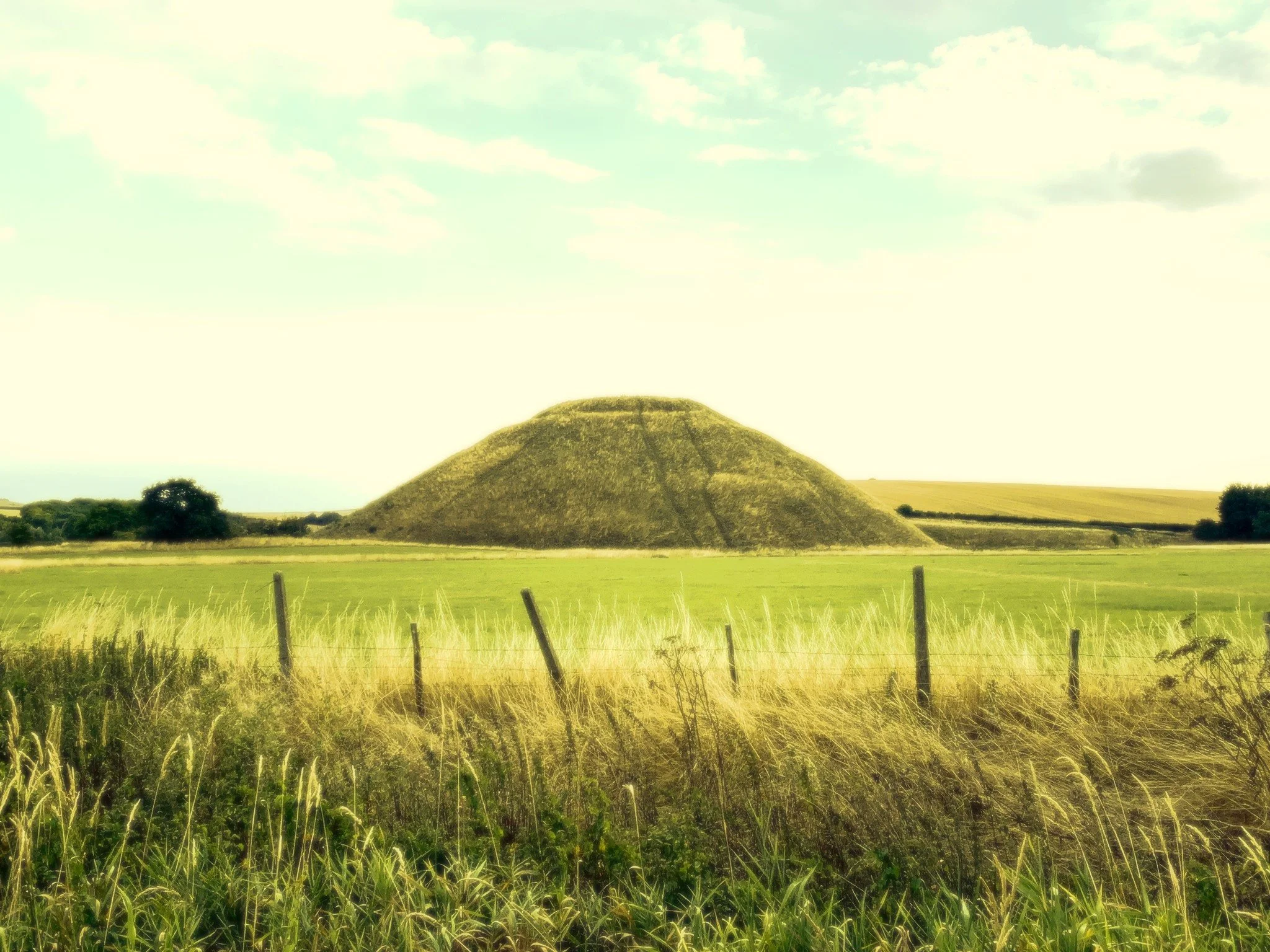A Journey to Avebury
A few years ago, I started thinking about Derek Jarman’s short film A Journey to Avebury, curious about the actual route taken on the titular journey. The village of Avebury in Wiltshire contains Europe's largest stone circle, so big that the outer perimeter contains a good part of the village, including streets and pub. For most travellers to Avebury, their trip is all about discovering the various stone circles, avenues, mounds and dolmens. The countryside backdrop is merely ambient set dressing, but it was for this reason that I came to love Jarman's film: it celebrates the quietly magical elements of the English countryside as much as the stones.
My quest was to learn the route of that original journey, visualising (a loaded term) a pilgrimage to Derek. My day job is all about creating guided walks, so tracing a route on foot naturally arises as a meaningful mode of enquiry. The walk becomes the thread that connects all the discoveries made during the research.
AJ2A was not originally conceived as a public-facing film; its matter-of-fact title sounds more like a film canister label. Jarman originally intended to gather material for a series of minimalist paintings, and the footage doubly served as ambient imagery that was projected during Jarman's social soireés. The film was one of several early ‘home movies’, not intended to be seen outside Jarman’s domestic setting. The addition of a coloured filter suggests that Jarman was aware of the subtly psychedelic light show impact it would have when it came to be projected. Only later would these short films establish a value and fragile aesthetic of their own. With time and repeated viewings, particularly when accompanied by Coil’s especially commissioned soundtrack of 1994, the rough and grainy footage incrementally offers its quiet enchantment.
The film's great illusion is that just a few ingredients comprise the film’s impressionistic substance, those elements variously being fields, hillsides, copses, pathways, livestock, the occasional glimpse of Wiltshire civilisation and of course the stones. A fuller immersion reveals a more layered experience: a careful pacing rich with possible meanings, allusions and intentions. Once inside, the film feels like an artfully assembled spell to burrow under its viewers’ skin. Of the 150 or so ‘frames’, only twenty or so actually show the stones. Most are rural scenes observed between Marlborough and Avebury, when traveling by foot along the Herepath over Fyfield and Overton Downs. Beyond a stray elbow or coat sleeve, neither Jarman nor his traveling companion appear in any shots.
The short scenes are rough and fuzzy, even for Super 8, but all are sensitively composed and framed. The sheer number of scenes within the film's ten minutes suggest a traveller so enthralled by his environment that he can't help but to stop seemingly at every shrub and fence post to record the wonder around him, aware of something that others cannot see. Most of the takes last just two or three seconds, a few flash past in less than a second. Two or three locations last for several seconds and use basic film-maker's techniques, eg zoom and pan. Where the camera lingers, there is surely meaning. At the mid-point of the film is the film's longest shot: a two-minute zoom that opens the landscape around a distinctly phallic looking dolmen, positioned centre screen. In the flesh, this stone is actually flat and wide; Jarman chose his angle to give the stone its sleek and thrusting appearance. This is a film about fertility.
The zesty light of AJ2A evokes the buzzing depths of summer in the sun: the heat sapping energy, uncommon enough to concentrate the senses and to feel that in the moment there is magic at work. But there is illusion at work here too. The version of the film soundtracked by Coil has been somewhat recoloured, lighter and brighter than Jarman's original amber filter, as if yearning for this to be a summer solstice journey. The leaves in flight suggest an autumnal setting, and sky is rarely cloud free. A further off-season clue comes at the six-minute mark when the black tip of the small umbrella fitted to Jarman’s Nizo camera becomes visible for two frames in the upper right of the screen. In the second half of the film, clouds dip low over the landscape, threatening to burst.
Twice, subliminal summer lightning flashes across the screen. On forensic pause mode, these flashes are revealed to be S-shaped seams in the hand-spliced film stock (the assembled film grew frail and was rarely screened after 1980). A key moment appears a few minutes into the film, with a wooden finger post at a crossroads informing the journeyers that they have covered 5 miles since leaving Marlborough. Avebury is still 1 1/2 miles away. Rockley is also signposted but other villages to the north and south are too faint to read. As well as being a pointer to the route taken, this is a key clue to the ancient history of Avebury, the site once being the crossing point of two trade routes. Whatever their function, the stone structures are there because of the crossroads, rather than the roads simply leading to the location of the stones.
The film’s most obviously human moment shows a row of school-age boys sitting in the sun on a wall, smiling and waving to the camera. The upfront glimpse of humanity—of fleeting youth—is surprising in the context of the stones and the empty, yellow fields. The boys sit on a low wall next to the Red Lion pub at the centre of the cross roads, and therefore at centre of the stone circle. There is nothing to make the location apparent to the viewer, unknowable to anyone outside the village. But the loaded subject and setting is surely intentional, dropped in amongst the other aeonic themes like a spell.
Who accompanied Jarman on that original journey? The near-total absence of people in the film prompted my curiosity. Just one: Jarman's former English teacher from his schooldays in Devon. Andrew Davis had supported and nurtured Jarman’s early literary promise, maintaining contact with his star pupil even a decade later. Davis lived in Marlborough, making this the likely starting point of their journey (Jarman earlier took the coach from Victoria, somewhat less cosmically). What is still unknown is the date of the expedition. The film itself begins with the title caption and the year 1971, while film databases commonly date it as 1972. According to James Mackay in the epic Jarman catalogue Protest! the film canister itself is labeled 'Jul 73'. There is an enjoyable mythical aspect to all this timelessness, but it seems likely that the walk was sometime around Autumn 1971, with the film being given a final edit in 1973.
The notion of studiously searching for clues to re-enact that original journey and to determine the exact date is perhaps to miss the real value of walking for pleasure, of discovery, of encountering the sort of magic that was effortlessly captured by Jarman. Indeed, the pilgrimage may even be moving further away from any meaningful revelation, like the coin that slips further into the depths of your sofa by the invasive action of the hand that strives to catch it.
Nevertheless! My recreation of the walk will take place on Sat 12 July 2025, starting at 11am in Marlborough and ending at approximately 5pm in Avebury. You can decide yourself whether it is a survey, ramble, derive or pilgrimage…
Tickets are £22, or free if you are one of the boys outside the Red Lion ;0)
Booking and full details appear here.
Watch the soundtracked version of A Journey to Avebury here (music by Coil)
All photographs shown here are by Ben Waddington, after Derek Jarman.





